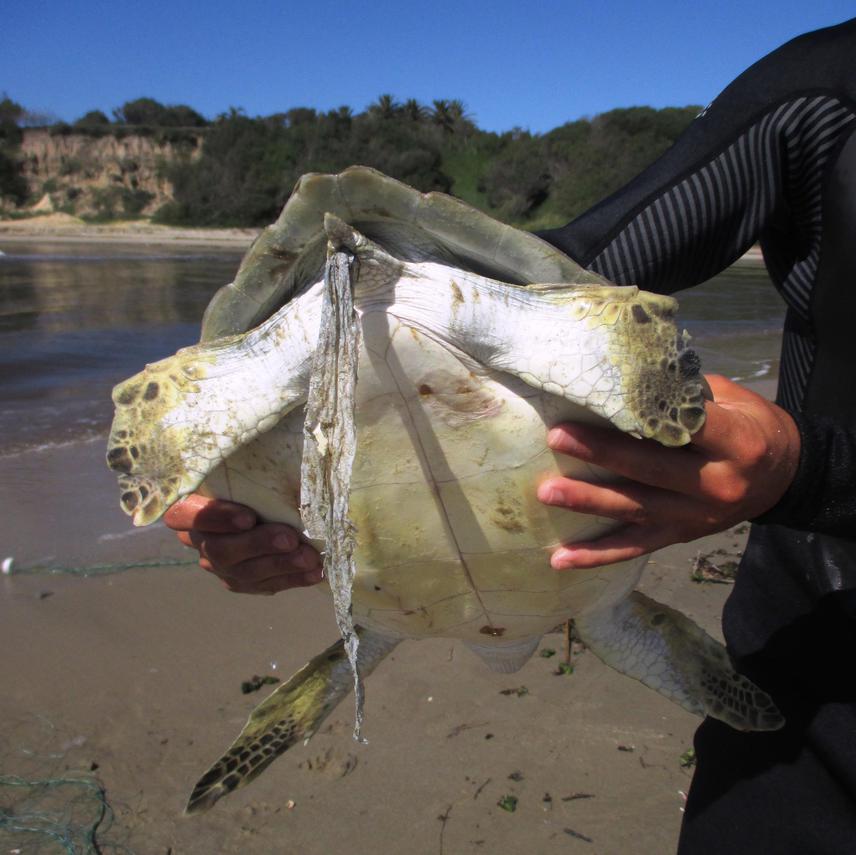Gabriela M Velez Rubio
Other projects
15 Oct 2013
Conservation and Research in a High-Priority Feeding Area of Juveniles Green Turtle in the South Western Atlantic
29 Nov 2018
Potential Effects of an Invasive Species on the Foraging Ecology of Green Turtle in a Relevant Feeding and Developmental Area in the Southwestern Atlantic Ocean
This project aims to characterize marine debris ingested by green turtles, and to reduce the presence of residues on these habitats in two protected areas of Uruguay. In addition, collaborated with local community and promote the sustainable ecotourism in these areas.

Green turtle plastic poo.
The concern about marine debris increases exponentially in the last decade being one of the main threats for marine fauna. Since the use of plastics, the main component of solid marine debris, continues to increase, so does the amount of plastics polluting the marine environment. The green turtle (Chelonia mydas) stock from the South Western Atlantic is one of the most threatened due to marine debris. During ten years the Uruguayan NGO Karumbe has been detected the ingestion of debris as the main threat for green turtle in Uruguay. In my previous RSG we monitored the green turtles and macroalgae community in two CMPA, Crero Verde and Cabo Polonio. During these surveys we found a lot of residues on the rocks and on the beaches, as lines and ghost nets. For that, our idea is to continue the green turtle survey including the clean up and the awareness about the presence of debris in the protected areas from Rocha Department.

Cabo Polonio, aerial view.
The impact of the present grant will be built upon previous achievements from earlier RSG of different researchers and will set a new step for increase the conservation of wild fauna in the Uruguayan coastal waters. Main expected outcomes are:
a) identified the origin of the marine debris ingested by green turtles to propose measures to reduce the residues to the stakeholders;
b) collaborate in the creation of the baseline to help in the correct implantation of the manage plan in the protected areas;
c) raise the awareness of the Uruguayan society about the marine debris, using the green turtle as an education tool to highlight the conservation needs of marine ecosystems, including many less charismatic animals;
d) involve the sport fishermen, local communities and tourist in the reduction of marine debris in coastal waters.
In this particular case, in some of this protected areas and their adjacent zones is important and urgent to increase awareness because even newly created; the CMPAs and the buffer areas are potentially threatened by the great presence of residues. In sum, my team and I will combine research and education tools to achieve long-terms conservation goals for the charismatic green turtle and their associated ecosystem.